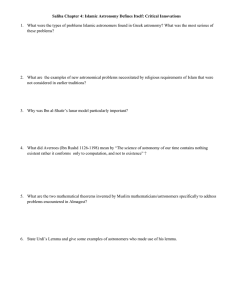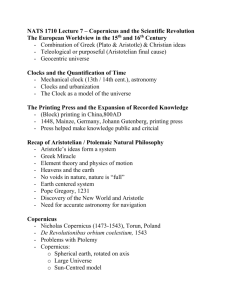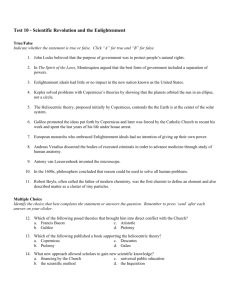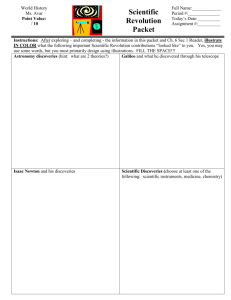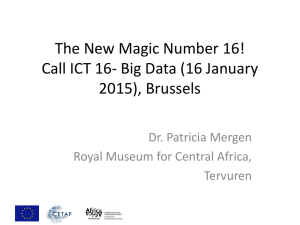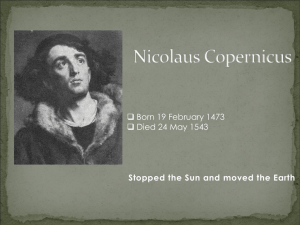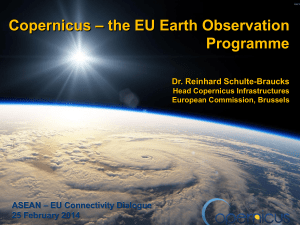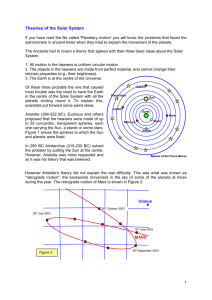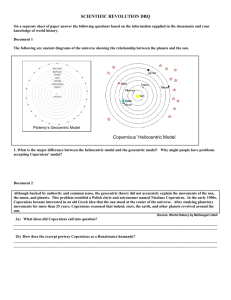EQUANTS AND MINOR EPICYCLES Copernicus did not like the
advertisement
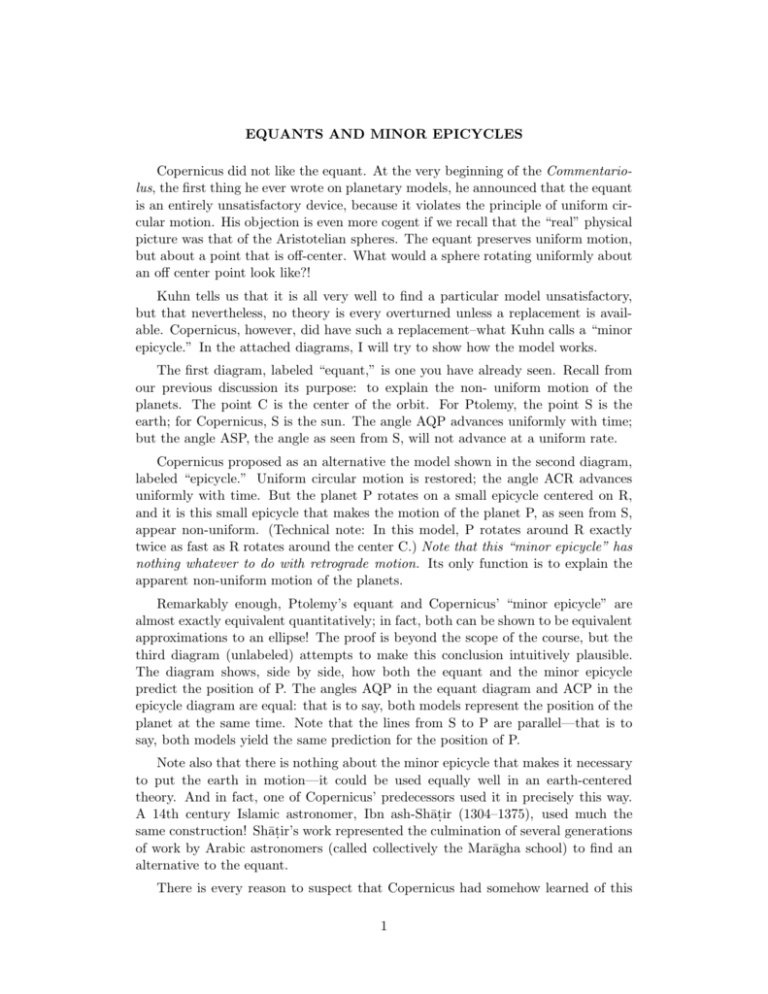
EQUANTS AND MINOR EPICYCLES Copernicus did not like the equant. At the very beginning of the Commentariolus, the first thing he ever wrote on planetary models, he announced that the equant is an entirely unsatisfactory device, because it violates the principle of uniform circular motion. His objection is even more cogent if we recall that the “real” physical picture was that of the Aristotelian spheres. The equant preserves uniform motion, but about a point that is off-center. What would a sphere rotating uniformly about an off center point look like?! Kuhn tells us that it is all very well to find a particular model unsatisfactory, but that nevertheless, no theory is every overturned unless a replacement is available. Copernicus, however, did have such a replacement–what Kuhn calls a “minor epicycle.” In the attached diagrams, I will try to show how the model works. The first diagram, labeled “equant,” is one you have already seen. Recall from our previous discussion its purpose: to explain the non- uniform motion of the planets. The point C is the center of the orbit. For Ptolemy, the point S is the earth; for Copernicus, S is the sun. The angle AQP advances uniformly with time; but the angle ASP, the angle as seen from S, will not advance at a uniform rate. Copernicus proposed as an alternative the model shown in the second diagram, labeled “epicycle.” Uniform circular motion is restored; the angle ACR advances uniformly with time. But the planet P rotates on a small epicycle centered on R, and it is this small epicycle that makes the motion of the planet P, as seen from S, appear non-uniform. (Technical note: In this model, P rotates around R exactly twice as fast as R rotates around the center C.) Note that this “minor epicycle” has nothing whatever to do with retrograde motion. Its only function is to explain the apparent non-uniform motion of the planets. Remarkably enough, Ptolemy’s equant and Copernicus’ “minor epicycle” are almost exactly equivalent quantitatively; in fact, both can be shown to be equivalent approximations to an ellipse! The proof is beyond the scope of the course, but the third diagram (unlabeled) attempts to make this conclusion intuitively plausible. The diagram shows, side by side, how both the equant and the minor epicycle predict the position of P. The angles AQP in the equant diagram and ACP in the epicycle diagram are equal: that is to say, both models represent the position of the planet at the same time. Note that the lines from S to P are parallel—that is to say, both models yield the same prediction for the position of P. Note also that there is nothing about the minor epicycle that makes it necessary to put the earth in motion—it could be used equally well in an earth-centered theory. And in fact, one of Copernicus’ predecessors used it in precisely this way. A 14th century Islamic astronomer, Ibn ash-Shāt.ir (1304–1375), used much the same construction! Shāt.ir’s work represented the culmination of several generations of work by Arabic astronomers (called collectively the Marāgha school) to find an alternative to the equant. There is every reason to suspect that Copernicus had somehow learned of this 1 tradition: many of the models Copernicus uses, particularly in the Commentariolus, are virtually identical to Shatir’s. As one Copernican scholar has written, The question . . . is not whether, but when, where, and in what form he learned of the Marāgha theory. There is evidence for the transmission of some of this material, although how much is uncertain, to Italy in the fifteenth century by way of Byzantine sources. . . . Since Copernicus spent the years 1501–03 in Padua, one might guess that it was there that he became concerned about physical objections to Ptolemy’s models, and learned of . . . whatever . . . Marāgha theory had been transmitted to Italy. Evidently it was the sort of thing that was of interest to Paduan Aristotelians, who were themselves concerned about physical problems of uniform rotation of spheres . . . (Swerdlow 1984, page 47 ff) Thus we are still left with the puzzle of why Copernicus set the earth in motion, when he could if he wished have simple eliminated the equant, along the lines of the Islamic models, and kept the earth fixed in the center of the universe. We may note in passing the importance, and also the seeming arbitrariness, of one’s intuitive sense of what is reasonable. Kepler, as we shall see, did not mind the equant at all. But he thought the minor epicycle entirely unsatisfactory, since he could think of nothing physical that could explain such motion! REFERENCES Noel M. Swerdlow and Otto Neugebauer, Mathematical Astronomy in Copernicus’s De Revolutionibus (Springer-Verlag, 1984). 2 COMPARISON OF MINOR EPICYCLE AND EQUANT
